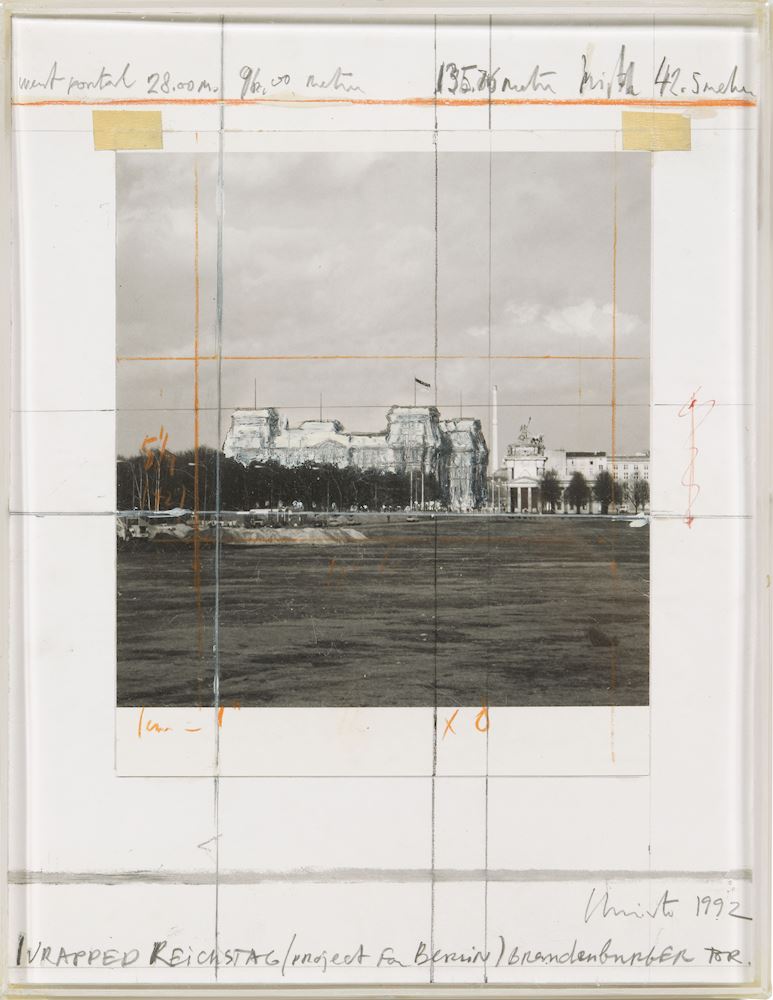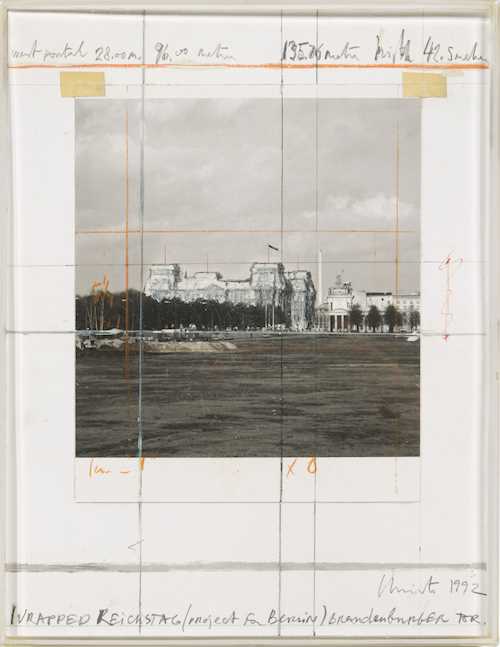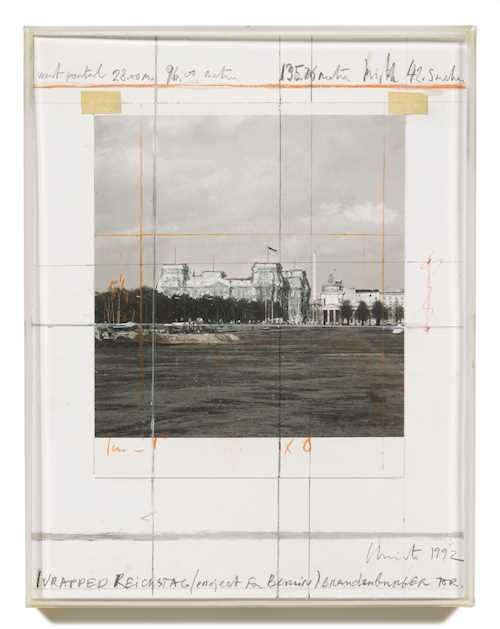
Lot 3464* - A207 PostWar & Contemporary - Thursday, 30. November 2023, 02.00 PM
CHRISTO (VLADIMIROV JAVACHEFF)
In the original plexiglass frame.
Provenance:
- Galerie Guy Pieters, Knokke.
- Purchased from the above by the present owner in 2022, since then property Switzerland.
There are few buildings that have undergone such continual changes as the Reichstag in Berlin: built in 1894, burned down in 1933, almost destroyed in 1945, it was restored in the 1960s. Despite all these dramatic events, it remains a symbol of democracy to this day.
As a unifying element during the Cold War and as a motif of hope and democratic conviction after the end of the Cold War, already in the early 1970s the artist duo Christo and Jeanne Claude were captivated by the Reichstag building. After decades of negotiations, three cancellations and more than 30 visits to Germany, the large-scale project was finally approved in 1994: from 24 June to 7 July 1995, with the help of 90 professional climbers and 120 technicians, the Reichstag building was wrapped in over 100,000 square metres of thick woven polypropylene.
Thanks to the skilful deployment by the artists, the material, which at first glance appears rigid and inflexible, revealed itself to be a delicate, multi-faceted element and a source of fascination to the more than 5 million people who visited the building while it was being wrapped. The process of draping the silver fabric shaped by blue ropes created a lush flow of vertical folds and pleats that emphasised the features and proportions of the imposing structure, revealing the essence of the Reichstag. At the same time, the use of fabric on the Reichstag was in keeping with the classic traditions of art history: as a fragile element, it conveys the unique quality of transience.
CHF 15 000 / 20 000 | (€ 15 460 / 20 620)
Sold for CHF 16 250 (including buyer’s premium)
All information is subject to change.


